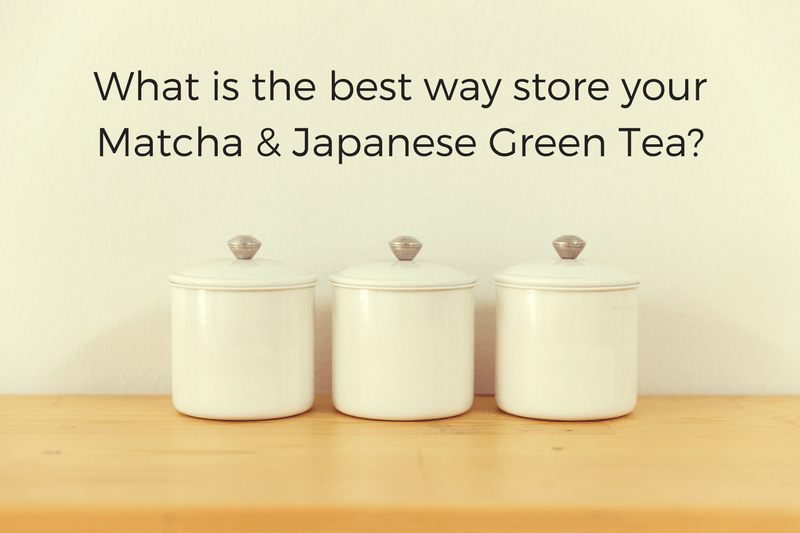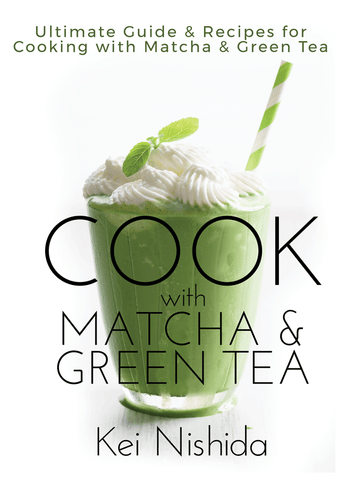TYPES OF TEA: MATCHA VS SENCHA GREEN TEA: WHAT ARE THE DIFFERENCES?
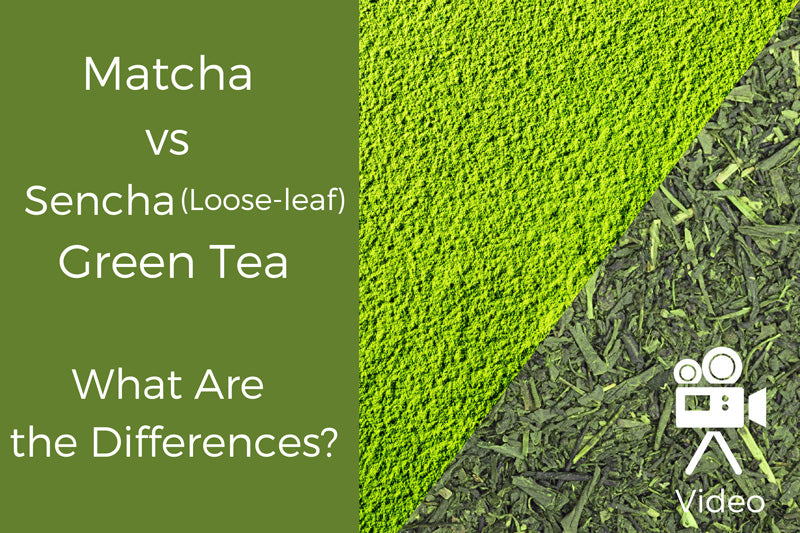
This article about different types of tea was posted back in 2018, but since it was popular, we made videos out of them. Watch the video and enjoy the original article below!
If you like this video, please click here to subscribe to our YouTube Channel so you don't miss future videos from us. Subscribe to YouTube Channel
Video Length: Part 1 - 3 minutes 54 seconds, Part 2 - 3 minutes 46 seconds
LEARN MORE ABOUT THESE DIFFERENT TYPES OF TEA
So, you love green tea. But you’re not quite sure about this matcha versus sencha business and these different types of tea. Maybe you’ve seen matcha at your local market, but you’ve been hesitant to try it because, well, you have no idea what it is. Or, perhaps you’ve only ever steeped your tea and are looking for something new and different to try. Regardless of your motives, the following will clear up any confusion you may have about the differences between matcha and loose-leaf green tea. We’ll cover variations in texture, growing conditions, processing techniques, consumption methods, and price.
A WHOLE NEW WORLD: THE DIFFERENCES BETWEEN MATCHA AND SENCHA (LOOSE-LEAF GREEN TEA)
China is credited for introducing tea to Japan in the 7th century. Since then, a unique tea culture has evolved. A variety of different cultivation methods have matured and expanded over time to provide consumers with the best tea available. Two of the most well-known examples of this are matcha and sencha.
7 Ways These Two Types of Teas Differ
Below, you’ll discover seven ways these two types of tea vary.
MATCHA IS A POWDER AND LOOSE-LEAF IS NOT.
While loose-leaf sencha and matcha are both derived from the same plant species — camellia sinensis — the end texture, shape, and consistency are completely different. Matcha is a very fine, stone-ground powder. On the other hand, sencha comes in rolled loose-leaf form.
We’ll go more into detail about the processing procedure that defines these types of tea soon.
MATCHA AND SENCHA ARE GROWN IN DIFFERENT CONDITIONS.
Texture is not the only thing distinguishing matcha from sencha green tea. Another stark contrast between the two teas is the conditions in which they’re grown.
Green tea plants cultivated for loose-leaf steeping purposes are grown in direct sunlight. On the other hand, plants grown for matcha are grown in the shade just before they are harvested. Interestingly enough, this method is believed to have been discovered by accident when Japanese tea farmers covered up the tea leaves to prevent them from freezing in the winter. High-grade matcha is grown in almost complete darkness.

Image of covering green tea to block sunlight before harvesting
Covering matcha plants with straw, bamboo mats, or vinyl tarps increases the amount of chlorophyll in the leaves, giving them their deep, green color. Not only does this method of slowing down photosynthesis increase the chlorophyll content, it also increases the amino acid content, giving quality matcha its distinct umami flavor. The idea behind this is to starve the plants so they crave more sunlight.

THESE TYPES OF TEA ARE HARVESTED AND PROCESSED DIFFERENTLY.
Although both matcha and sencha leaves must first be steamed to prevent oxidation, they are harvested and processed very differently.
Usually, sencha tea is picked with the stem, shoot, and two or three opened leaves intact (more leaves are intact if picked by machine). Sencha leaves are fanned with damp air to maintain freshness, and then steamed to prevent oxidation. After cooling, the leaves are pressed, dried, and made ready for distribution. The leaves may be rolled depending on the specific processing techniques of the region from which they’re grown. Rolling the leaves produces a needle-like shape which intensifies the flavors when steeped and is usually seen in Chinese tea. (Read my other article comparing Japanese Tea and Chinese Tea here.)
Unlike sencha, only the youngest parts of the plant are picked when harvesting matcha. More specifically: The two leaves at the very tip of the shoot. Similar to sencha, the soon-to-be-matcha leaves are also steamed to preserve color and nutrients. Thus begins the long and laborious process of removing stems and veins. The leaves that make it through quality control are called tencha.
These leaves are then ground by specialized granite grinding wheels. And voilà! You’ve got matcha!
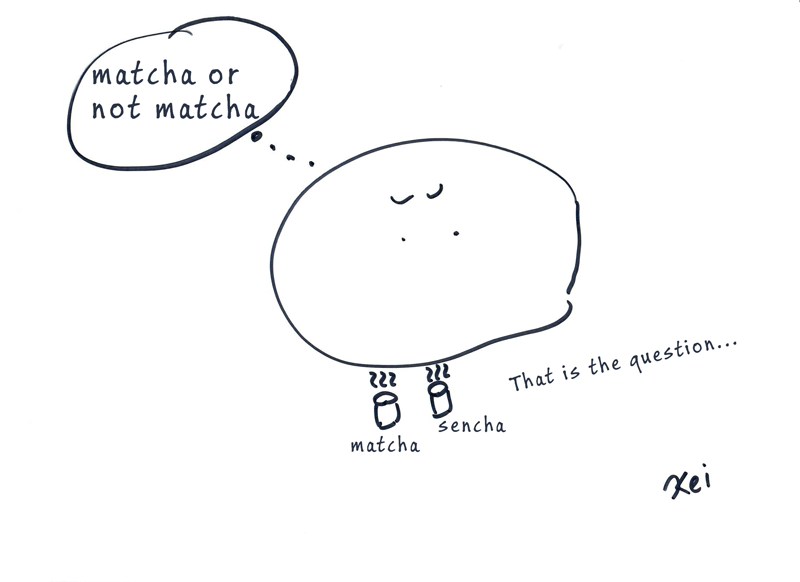
MATCHA AND POWDERED KONACHA TEA ARE NOT THE SAME TYPE OF TEA
Although konacha literally means “powder tea”, it shouldn’t be confused with matcha. As mentioned above, matcha tea is ground using granite-grinding wheels. Konacha is actually just made up of the dust, and small bits of leaves and buds that are left behind after the processing of sencha.
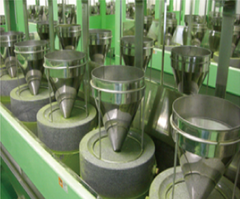 Stone Grind of Matcha
Stone Grind of Matcha
MATCHA IS CONSUMED DIFFERENTLY, MAKING IT HEALTHIER COMPARED TO LOOSE-LEAF GREEN TEA.
Matcha and loose-leaf sencha have a plethora of health benefits that attract tea drinkers; but because they are consumed differently, one is inherently better for you than the other.
Here’s why…
When we steep loose sencha leaves, we are not getting all of the antioxidants and nutrients we could be getting if we were to consume the entire leaf — ergo, matcha.
To drink matcha tea means to ingest the entire leaf. By doing so, we get more of the health benefits the plant has to offer.
WHY IS MATCHA MORE EXPENSIVE THAN SENCHA?
As we’ve discovered, the process of producing matcha tea requires more labor than producing sencha tea. Here are two key reasons why matcha tea is more expensive:
- It requires more involvement, care, and skill to produce
- Quality matcha is only grown in specific geographic regions
FAKE MATCHA VS. REAL MATCHA: HOW TO SPOT GOOD QUALITY MATCHA
As with most things in life, all matcha is not created equal. There are some things you should keep in mind when venturing into the land of matcha. Here’s what to watch out for:
WHERE IN THE WORLD DOES QUALITY MATCHA COME FROM?
When it comes to green tea, it’s all about the quality of the soil. The plant grown to produce green tea is very sensitive, so experts suggest purchasing matcha from Japan rather than China as the concentration of lead tends to be higher there. (Read here about Japanese farmers caring for their dirt for their tea.)
YOU WANT IT TO LOOK LIKE BRIGHT-GREEN GRASS, NOT TASTE LIKE IT.
Don’t be fooled by fancy packaging. While location is crucial, so is the color of your matcha. If you find yourself with a can of matcha that’s dull in color, chances are the quality is not what you’re looking for. Now, if you open up the can and are delighted to find a bright, vibrant shade of green (almost neon), then congratulations! You’ve got yourself a high-grade batch of matcha.
Similarly, if you open up the package and an overwhelmingly gross scent of grass tickles your nose, you may have been misled. High-grade matcha should have a sweet smell to it.
NO STEMS OR CLUMPS HERE!
Another thing you want to see in your matcha is that it’s been properly de-stemmed/de-veined and thoroughly ground. You don’t want to find any clumps or pieces of vein and stem lurking in your fresh can of matcha!
LAST, BUT CERTAINLY NOT LEAST — TASTE!
As mentioned at the beginning of this article, matcha should be sweet with earthy, savory, and sweet whispers of flavor.
NOW GO RELAX AND MAKE YOURSELF A CUP OF TEA!
We’ve certainly covered a lot of ground. Much of what you need to know about the two kinds of teas–from how they’re made to how they’re consumed–has been neatly laid out for you. Now you can relax and make yourself a cup of matcha (or sencha) tea, and reminisce about the journey it made from the fields to your lips.
Did you learn a lot about different types of tea in this post?
Learn even more in these posts next:
- WHICH TYPE OF TEA IS GOOD FOR ME? (INTERACTIVE TEA FINDER)
- IS IT OKAY TO DRINK GREEN TEA ON AN EMPTY STOMACH?
- EVERYTHING YOU NEED TO KNOW ABOUT JAPANESE HOJICHA TEA
Related Articles You May Be Interested In
Get Free Download
If you have ever thought that Green Tea is an ìacquired tasteî or that it is ìtoo bitterî to enjoy, weíre here to change your mind! We want everyone to experience the health benefits of Green Tea and show you that this can be an amazing, refreshing, and delicious drink when made correctly. With just a few tips on how to brew this powerful leaf, we can change your mind about the taste and enjoyment of drinking Green Tea.
Donít miss out on the health benefits of tea!
- Improve health
- Increase brain function
- Regulate weight
- Lower your risk of cancers
- Reduce risk of heart disease
- Lowers risk of diabetes
We know that you will love this tips to brewing tea and getting the most flavor and elegance out of every cup. Sign up for our newsletter and get this great informative manual on brewing green tea. You will learn what it is that makes it one of the most popular beverages in the world.
The E-Book also includes the chapter of Kei Nishida's book, "Art of Brewing Japanese Green Tea" where he teaches you how to brew hot and cold Japanese Green Tea.
Also in Japanese Green Tea Lovers in India
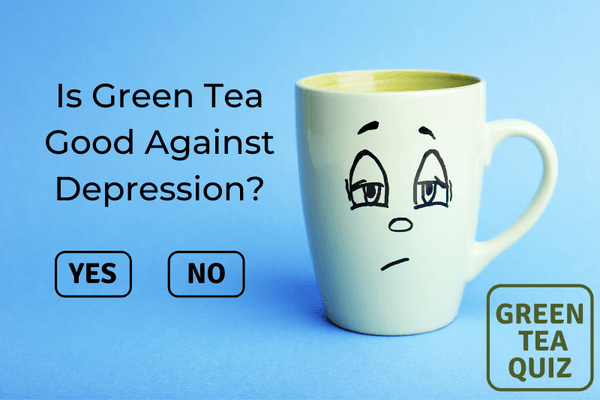
Is Green Tea Good Against Depression?
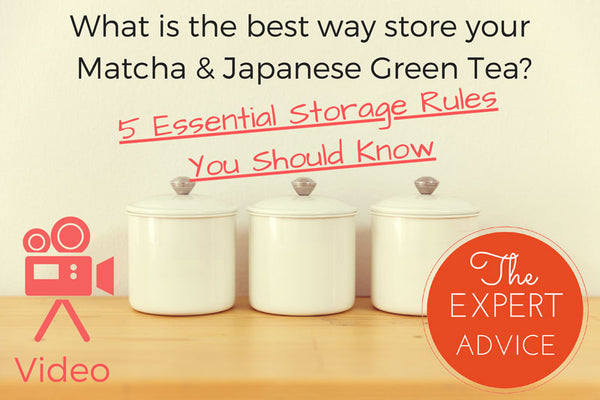
What is the best way to store your matcha & Japanese green tea?
5 Essential Storage Rules for Matcha and Japanese Green Tea
Read on to learn how to store matcha the proper way to ensure that you get the most out of this ancient elixir.
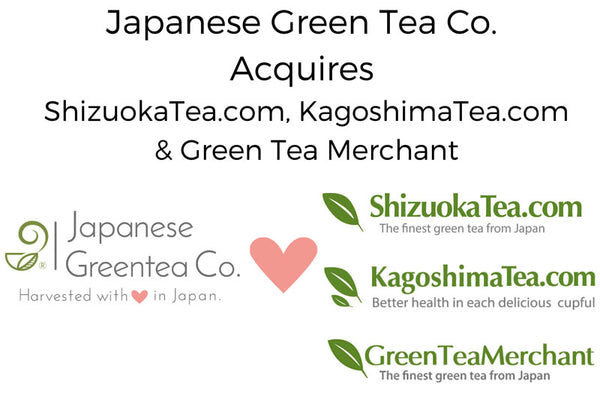
Japanese Green Tea Co. Acquires ShizuokaTea.com, KagoshimaTea.com & Green Tea Merchant
In 2020, Japanese Green Tea Co. officially acquired ShizuokaTea.com, KagoshimaTea.com, and Green Team Merchant.
Green Tea Merchant, who has been operating ShizuokaTea.com, KagoshimaTea.com, has been the pioneer of online Japanese tea sales ran by Kent Rhoads since 2000.




